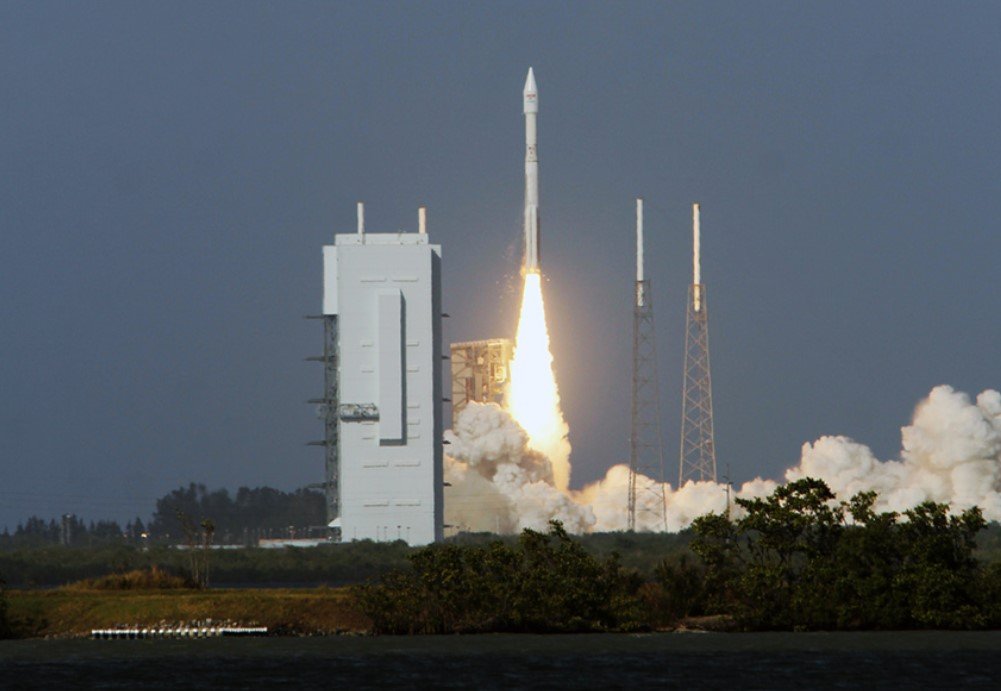United Launch Alliance (ULA) has revealed its new Vulcan rocket for the first time at Cape Canaveral Space Force Station in Florida. The rocket, which is expected to make its debut flight later this month, is the company’s next-generation launch vehicle that will replace the Atlas V and Delta IV rockets.
The Vulcan rocket is designed to be more versatile and powerful than its predecessors, capable of launching a wide range of payloads to various orbits, including the Moon and Mars. The rocket has a two-stage configuration, with a 5.4-meter-diameter core stage powered by two BE-4 engines from Blue Origin. The engines use liquid oxygen and liquid methane as propellants, which are more environmentally friendly and cost-effective than the kerosene and hydrogen used by the Atlas V and Delta IV rockets.

The second stage of the Vulcan rocket is the Centaur V, an upgraded version of the Centaur III stage that has flown on the Atlas V rocket for nearly two decades. The Centaur V stage has a 3.8-meter-diameter tank that can hold more propellant, and a single RL10 engine that can be restarted multiple times in orbit. The stage also features integrated avionics and autonomous flight termination system, which reduce the complexity and weight of the rocket.
The Vulcan rocket can accommodate different sizes of payload fairings, ranging from 4 meters to 8 meters in diameter, depending on the mission requirements. The rocket can also carry up to six solid rocket boosters for additional thrust, which are provided by Northrop Grumman. The boosters are based on the GEM 63 design that has flown on the Atlas V and Minotaur rockets, but with improved performance and reliability.
Vulcan: A key player in the US space program
The Vulcan rocket is a key player in the US space program, as it has been selected by the US Space Force and the US National Reconnaissance Office as one of the two providers for the National Security Space Launch (NSSL) program, along with SpaceX. The NSSL program aims to ensure the access and reliability of the US military and intelligence satellites to orbit. The Vulcan rocket has been awarded 60% of the NSSL missions for the period of 2022-2027, which include some of the most critical and complex payloads for the US national security.
The Vulcan rocket is also expected to support the NASA’s Artemis program, which plans to return humans to the Moon by the end of this decade. The rocket will launch the first two elements of the Gateway, a lunar outpost that will serve as a staging point for lunar landings and exploration. The rocket will also launch the Power and Propulsion Element (PPE) and the Habitation and Logistics Outpost (HALO), which will provide the power, propulsion, communications, and living quarters for the Gateway. The Vulcan rocket will also launch the Volatiles Investigating Polar Exploration Rover (VIPER), a robotic rover that will search for water ice at the lunar south pole.
The Vulcan rocket will also enable the launch of various scientific and commercial payloads, such as the Dream Chaser spaceplane from Sierra Nevada Corporation, which will deliver cargo and experiments to the International Space Station (ISS). The rocket will also launch the Peregrine lunar lander from Astrobotic, which will carry several payloads from NASA and other partners to the Moon. The rocket will also launch the Lucy and Psyche missions from NASA, which will explore the asteroids in the solar system.
Vulcan: A milestone for ULA
The Vulcan rocket is a milestone for ULA, as it represents the culmination of years of development and testing. The rocket has undergone various tests and reviews, such as the Critical Design Review (CDR), the Booster Structural Test Article (BSTA), the Pathfinder Tanking Test (PTT), and the Flight Readiness Firing (FRF). The rocket has also completed the stacking and integration processes at the Vertical Integration Facility (VIF) at Cape Canaveral.
The debut flight of the Vulcan rocket is scheduled for December 24, 2023, with a launch window opening at 2:00 p.m. EST (19:00 UTC). The rocket will launch the Astro Digital Landmapper-HD satellite, a high-resolution Earth observation satellite for Astro Digital, a US-based company that provides geospatial data and analytics. The mission, designated as Vulcan Centaur 1 (VC-1), will also carry several CubeSats as secondary payloads, which will be deployed by the Centaur V stage after the primary payload separation.
The VC-1 mission will demonstrate the performance and reliability of the Vulcan rocket, as well as the Smart Reuse technology, which is a system that allows the recovery and reuse of the BE-4 engines. The system consists of an aeroshell that protects the engines during reentry, a parachute that slows down the descent, and a helicopter that captures the engines in mid-air. The Smart Reuse technology aims to reduce the cost and environmental impact of the Vulcan rocket, while maintaining the quality and safety of the engines.
The VC-1 mission will also mark the end of an era for ULA, as it will be the last flight of the Delta IV Heavy rocket, which will launch the NROL-82 mission for the US National Reconnaissance Office. The Delta IV Heavy rocket, which has been in service since 2004, is the most powerful operational rocket in the US, capable of lifting up to 28.8 tons to low Earth orbit. The rocket has launched some of the most important and secretive payloads for the US national security, such as the Orion spacecraft, the Parker Solar Probe, and the NROL-71 satellite. The Delta IV Heavy rocket will be retired after the VC-1 mission, leaving the Vulcan rocket as the sole launch vehicle for ULA.
